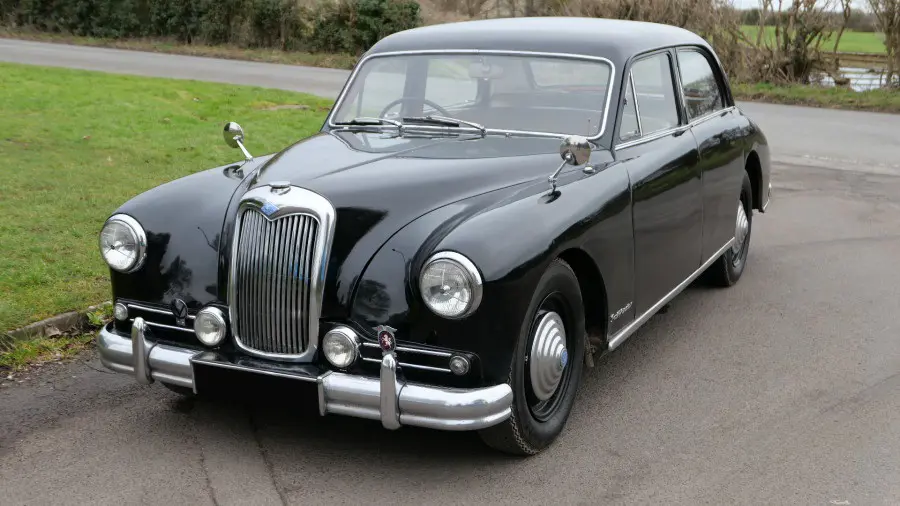MISUNDERSTOOD – THE RILEY PATHFINDER
18 March 2024
It was one of the most attractive saloons of the 1950s, combining overtones of Lancia with the traditional Riley grille. The RMH-series Pathfinder is handsome, imposing, and luxurious and could have represented a new direction for the marque. Yet, for too many years, it was a misunderstood car.
The Pathfinder was the third design created by Gerald Palmer for the Nuffield Group (MG, Morris, Morris-Commercial, Riley and Wolseley). The Wolseley 4/44 was the first with the MG Magnette ZA and the latest Rileys starring at the 1953 London Motor Show. The engine was the famed 2.5-litre ‘Big Four’, and the Pathfinder inherited the torsion bar and wishbone independent front suspension of its RMF predecessor.

The Riley had a separate chassis, unlike the Magnette and the 4/44, as Palmer thought the engine and the weight of the gearbox ruled out unit construction. Meanwhile, devotees of the marque were muttering about its resemblance to the smaller MG and Wolseley. Nuffield took control of the marque “As old as the Industry, As Modern as the Hour” in 1938, but until 1953, it retained its independence within the group. There were also mutterings at the Abingdon factory that management had rushed the new Riley into production.
However, The Motor thought “The Pathfinder is the most comfortable Riley so far made”, and Autocar found it “a willing car, with performance to spare and viceless handling qualities. The price was £1,382 7s 6d, and the extensive list of equipment included an adjustable steering column and fog lamps. One intriguing detail was the floor-mounted gear lever to the driver’s right, creating a genuine six-seater without using a steering column shift.
In short, the Pathfinder looked set to fulfil the sales copy’s promise of: “remarkable roadholding qualities; stability with surging power. Fast cruising in luxurious comfort; fast cornering in perfect safety”. The famed motoring writer John Bolster even wrote in Autosport: “I have driven every Riley model produced in the last twenty-five years, and this RMH is the best to bear the name of Riley”. So, why did it not enjoy more commercial success?
One reason was the Pathfinder’s presence. In the not-at-all-biased opinion of this writer, it is a stunning-looking car, but as Autocar noted in 1954: “The Pathfinder is recognizably Riley, of course, but the break with traditional Riley shape is a wide one, almost a divorce”. Another is that year, Wolseley introduced the 6/90, which strongly resembled the Pathfinder.
In reality, the only panels in common were the front doors, boot lid and main body shell, while the Wolseley stood two inches higher than the Riley and was powered by the 2.6-litre C-series engine. But in the 1950s, the two marques had very different images. If Riley was a car for the Henley Regatta and Goodwood, Wolseley was for bank managers and B-film police inspectors.
In addition, some owners grumbled about the worm and roller steering, while the Pathfinder’s chassis assembly was subcontracted to a third party that did not pay due care to alignment and welding processes. By then Riley was part of the British Motor Corporation empire, follwing the 1951 merger between Austin and Nuffield. In 1955, BMC’s chairperson, Leonard Lord, used an entirely positive Autocar test of the 6/90 as a pretext to fire Palmer.
At this point, Riley arguably lost any chance of retaining an individual identity. BMC had already declined the opportunity to build the RMJ, powered by an overhead cam version of the C series engine - a saloon that Palmer intended to “out-Jaguar the Jaguar” The Two-Point-Six, which succeeded the Pathfinder in 1957, was an interesting car in its own right but was essentially a lightly modified 6/90 Series III.
This is why the Pathfinder is such a fascinating machine. It was the last car to use the marque’s famous engine – and reviewed in print as “the best to bear the name of Riley”.
